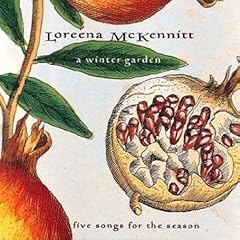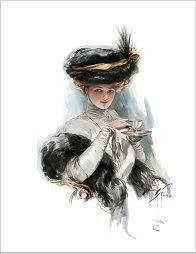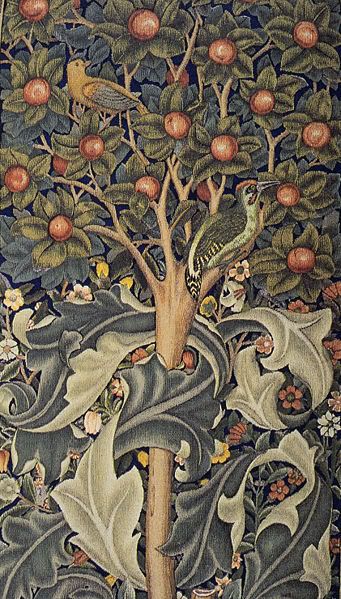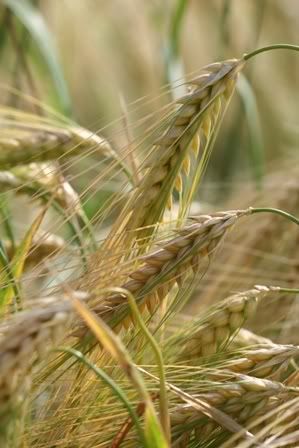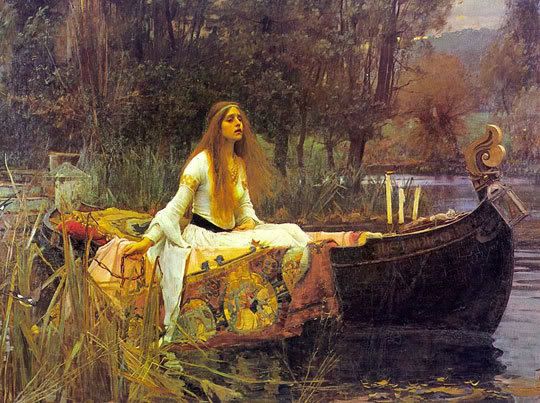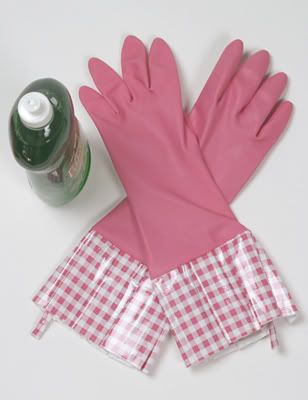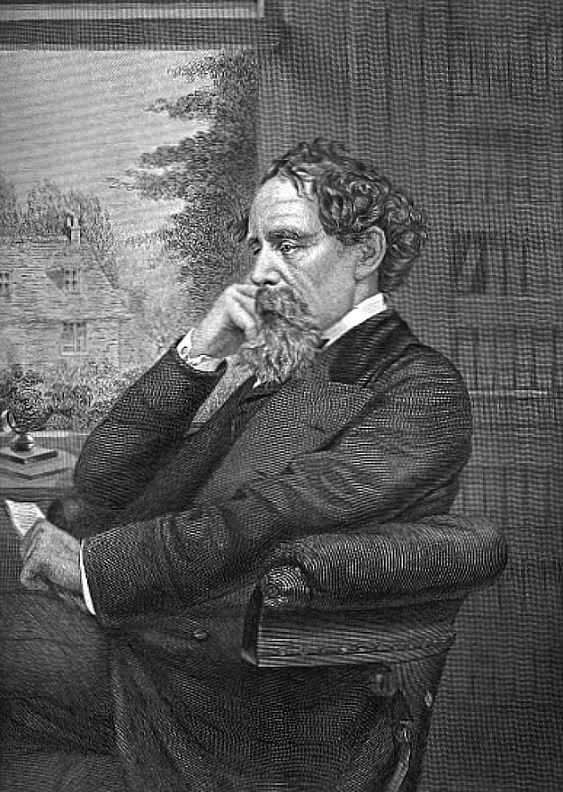I have been so busy this week that it's been difficult to find time to post! My husband and I are visiting my mom's house and having a wonderful time. It's his first time visiting the house where I was born and it's been really special to be able to share with him all of our Christmas traditions!
I am having such a good time here! I re-discovered a treasure trove of my mom's needlepoint and design books that I can't wait to share with you all! I also found an abandoned needlepoint project (a rose pin-cushion) that is keeping me busy!
It's probably going to be pretty difficult to find much time to post before New Years' (that's when we are returning home). I hope everyone is having a great Christmas!
Monday, December 24, 2007
Christmas Eve
Posted by
Margaret
at
1:07 PM
0
comments
![]()
![]()
Labels: holidays, needlework
Thursday, December 20, 2007
Homemaking as Activism
I found this article on crafting through a link on the Buy Handmade website It was very interesting! "Craftivism: Is Crafting the New Activism?" http://www.columbiachronicle.com/paper/arts.php?id=2251
A few years ago, the feminist movement generally dismissed traditional women's work as "anti-feminist" and encouraged women to find "meaning" in their lives by pursuing careers and activities outside the home. That is beginning to chance, and today, third-wave feminists are returning to activities that have been traditionally labled as feminine (knitting, sewing and other crafts) and arguing that these activities are important as well. How refreshing! If you follow this idea to its natural conclusion, it also means that homemaking can also be celebrated by feminists as a valuable, viable career choice. If crafting can be activism, can't homemaking be a form of activism too?
One of the problems with the early feminist movement was that it discounted the value of traditional feminine pursuits. While first and second-wave feminists accomplished a great deal we can all be thankful for, it doesn't mean that feminism can't evolve! I learned about this from my own mom. She taught my sister and I that we could pursue any career we desired, though she had chosen to be a career homemaker and home-educator. I never saw this as being at all self-contradictory. I really admired her growing up and I hope to one day follow in her footsteps.
Have you ever read Laurel's Kitchen? It's a vegetarian cookbook that, along with my mom's example, laid the groundwork for many of my attitudes towards homemaking. It came out in the mid-1970s and the book's attitude towards being a wife and mother is incredibly positive. In the original edition the author begins by describing her disappointment with the junk food she'd been feeding her kids. After meeting Laurel she follows her around for months picking up on her cooking techniques as well as a wholistic philosophy of homemaking. The book has a heavy emphasis on the importance and value of giving our families healthy, "slow," food. While I'm not a vegetarian, I find that I still take the book of the shelf on a regular basis just to remind myself that caring for other people is a valuable goal in life (interestingly, I just noticed that Carol Flinders, co-author of Laurel's Kitchen has written a book called Rebalancing the World: Why Women Belong and Men Compete and How to Restore the Ancient Equilibrium interesting! I'm putting it on my wishlist).
I'm glad to see that these ideas seem to be getting more attention. Perhaps more of todays women will fight to have the value of their traditional crafts and activities recognized!
Posted by
Margaret
at
1:08 AM
2
comments
![]()
![]()
Labels: philosophy
Monday, December 17, 2007
Chirstmas Shopping for the Romantic in Your Life
 This dressing table mirror is 65 pounds (about 130 dollars). It will certainly add a touch of romance to your boudoir!
This dressing table mirror is 65 pounds (about 130 dollars). It will certainly add a touch of romance to your boudoir! This "Unicorn in Captivity" pillow is based on a design from the Netherlands that dates back to 1495. The tapestry on which it's based is one of the best preserved from the period and is likely meant to portray the taming of the beloved (okay, so, it's a little medieval, but what do you expect?). The pomegranates in the background represent fertility and marriage. It's a beautiful gift, and at $40 for non-museum members, it's reasonably affordable as well. http://www.metmuseum.org/store
This "Unicorn in Captivity" pillow is based on a design from the Netherlands that dates back to 1495. The tapestry on which it's based is one of the best preserved from the period and is likely meant to portray the taming of the beloved (okay, so, it's a little medieval, but what do you expect?). The pomegranates in the background represent fertility and marriage. It's a beautiful gift, and at $40 for non-museum members, it's reasonably affordable as well. http://www.metmuseum.org/storeI have several other favourite sites for Christmas shopping.
Gaelsong is a great site for celtic gifts http://www.gaelsong.com/
Victorian Trading Company always has good victorian gifts, though I think their print catalogue is a bit better than their online selection http://www.victoriantradingco.com/
The PBS online store also has a great selection of things (Anglophile alert: be sure to check out "British Drama" under "shop by interest"--they've got some great stuff there) http://www.shoppbs.org/home/index.jsp
Last, but not least, BBC America has a great store as well. If you're a fan of BBC productions, their dvd store is the place to go. Check it out at http://www.bbcamerica.com/content/142/shop.jsp
Happy shopping!
Posted by
Margaret
at
1:10 PM
1 comments
![]()
![]()
Labels: reviews
Sunday, December 16, 2007
Morris on Art and Design
I picked up a great book at the library on Friday. Morris: On Art and Design, edited by Christine Poulson. It's a great little collection of William Morris' letters and essays. If you are at all interested in the details of the work done by Morris and Company, the book has tons of info on the process of natural dyeing, glass making and a number of other crafts.
I found this quote from Ruskin's Unto This Last (1860) particularly inspiring:
"THERE IS NO WEALTH BUT LIFE. Life, including all its powers of love, of joy, and of admiration. That country is the richest which nourishes the greatest number of noble and happy human beings; that man is richest who, having perfected the functions of his own life to the utmost, has also the widest helpful influence, both personal, and by means of his possessions, over the lives of others. "
Well, I'm not so sure about "widest influence" bit--personally I think a rich influence on the lives of a few people can be just as vital--but I love the overall sentiment.
Posted by
Margaret
at
1:14 PM
0
comments
![]()
![]()
Labels: philosophy, william morris
Friday, December 14, 2007
Kelmscott Chaucer
Posted by
Margaret
at
1:02 PM
4
comments
![]()
![]()
Labels: kelmscott press, poetry, pre-raphaelites
Thursday, December 13, 2007
More on William Morris' Philosophy...
"If I were asked to say what is at once the most important production of Art and the thing most to be longed for; I should answer; A beautiful house; and if I were further asked to name the production next in importance and the thing next to be longed for; I should answer; A beautiful book. To enjoy good houses and good books in self-respect and decent comfort, seems to me to be the pleasurable end towards which all societies of human beings ought now to struggle."
~William Morris
Well, there you have it from the man himself! Morris' mania for beautiful things is well documented. And it's no secret that books and houses were two of his chief obsessions. As a designer, writer and publisher, he devoted himself to human comfort and education. But is he being a bit excessive to argue that human beings ought to "struggle" so that people can enjoy beautiful houses and books "in self-respect and comfort." Is Morris going a little over the top here? Shelter and an education are important, to be sure--but why the emphasis on comfort and beauty? And are these things really significant enough to fight for?
This is a difficult question. While Morris is widely recognized as an early socialist thinker, I would think that many socialists would have a difficult time with his emphasis on beauty and comfort. Many would read a quote like this and say to themselves, “why should I bother with a beautiful home and collecting possessions like books? How bourgeois!”
Today Morris' impassioned idealism seems almost quaint when he argues that “all societies of human beings ought now to struggle” in order “to enjoy good houses and good books in self-respect and decent comfort.” But is Morris talking about having a gorgeous McMansion to show off and a showy bookshelf? Morris’ philosophy of life was rooted in the writings of John Ruskin. Ruskin argued that modernity had turned a whole class of people--the working class---into something less than human beings. For Ruskin, the assembly line was the nadir of human innovation, reducing a group of people into mere cogs in the wheel of society (this is one of the important distinctions features of Morris' and Ruskins' political philosophy--it was socialist, not communist, and placed tremendous weight on the importance of the individual). Morris and Ruskin felt human beings deserved work that gave them a feeling of distinction and pride, rather than treating them as yet another machine required in order to produce cheap, shoddy, production-line goods.
If you've ever worked a summer flipping burgers, stuffing envelopes, or doing similar monotonous work, you probably know what this feels like. Now, compare that feeling with your pride when you've produced a beautiful piece of needlework, cooked a fabulous meal, or finished another satisfying project. Pretty different, eh? And while our protestant work ethic society tries to tell us that we should feel satisfied and proud in our minimum wage jobs, we somehow still can sense the difference.
Work does not have to be "white collar" in order to produce a feeling of accomplishment (a day of landscaping might be as satisfying to some as a day in the office). In fact, it might be even more soul-killing than less "elevated" pursuits (cooking dinner). A beautiful home does not need to be extravagent. Indeed, a remarkably simple home was what Morris advocated most. The important thing is that one's house/apartment/room is comfortable and satisfying. It should be a place that reflects your personal values and makes you feel proud of your accomplishments.
The same should be true of one's books. I will take this idea one step further and argue that this also applies to one's education. Books were one's education, for the most part, in Morris' day, so I don't think it's too much of a stretch to argue that our children deserve to be educated in an environment where we are respected and treated with dignity. Unfortunately, far many schools, highschools and universities treat their students as a means to an end. Children are taught not to expect too much from their lives and unversity students are urged to choose careers that "fill the market's needs" rather than one that satisfies their own longings for personal development.
Is Morris being a trifle idealistic? Perhaps, but that's what I like best about him. And I'm willing to join in the struggle for self-respect and comfort!
Posted by
Margaret
at
11:48 AM
0
comments
![]()
![]()
Labels: philosophy, william morris
Wednesday, December 12, 2007
The Origins of Christmas Celebrations
Most of us are aware that Christmas falls very close to midwinter solstice (Kwanzaa and Hannukah aren't that far off either). The date for Christmas was set by Rome in the third century AD in order to coincide with (and hopefully to supersede) the pagan festivals devoted to Saturn (King, 134).
Many of our modern celebrations of the holiday are clearly derived from Roman customs surrounding the Saturnalia fire festival. At this time of the year, homes were bedecked with "evergreens, candles, and specially constructed lanterns"(King, 134). Gifts were given and were even giftwrapped in coloured cloth!(134) Special foods such as exotic fruits, nuts, sweet bread and "pastries pressed in the shape of stars" were eaten along with cider and mulled wine (134).
The midwinter celebrations of the Celts had more to do with sun-god. Yule log superstitions have existed for many years in Celtic society. Despite numerous claims, it is not known whether the Christmas tree phenomenon originated with the Druids. I'm always suspicious of claims regarding "the first Christmas tree"--whether Martin Luther or the druids are credited, and it seems safer to me to stick with Queen Victoria since she's the first person we can be sure about having an actual Christmas tree.
The burning of the Yule Log was connected to the sun-gods purifying abilities and bringing the wood inside was a metaphor for inviting the sun-gods blessing into the home (135). Interestingly, the word Yule is derived from the Middle English "yole" and is perhaps related to our modern English words "yolk" and "yellow"(King, 135), which would make sense, since the sun appears yellow to our eyes.
Holly and Ivy are still probably the plants we most associate with Christmas. In ancient times, they were connected to the worship of Saturnalia, whose "club was of holly wood" and whose "sacred bird, the gold-crested wren, nested in ivy" both plants were also associated with the druids(King, 136).
There are many theories as to why the Roman empire chose to celebrate Christmas at this time of year. Some staunch traditionalists argue that Christmas falls at the same time of the year as Christ's actual birth. Others believe the holiday was set to occur at yuletide as a means of distracting pagans from their former rituals and giving them something else to celebrate. There are even christians who argue that Christ's birth should NOT be celebrated at this time of the year, since it comes dangerously close to glorifying the pagan past...
Regardless of which party is correct, I think it is perfectly fitting that Christmas comes at this time of year. In the Northern Hemisphere, Solstice marks the point in the calendar when days grow longer and the nights become shorter. What more fitting point in the calendar to welcome the birth of the "Son of God" or "Light of Lights"? Alternately, if one is of the pagan persuasion, I should think Christmas must seem far more innocuous than, let's say, Easter, since it's a celebration of life and new birth (which fits quite well with many neopagan religions). I guess I'm just a little sad everyone can't just get along. It seems to me that everyone--Christians, Atheists, Pagans and people from all religions--could benefit greatly from a little celebration at this time of the year, no matter what they're celebrating.
Reference: King, John. The Celtic Druids' Year. Blandford: London, 1994.
Posted by
Margaret
at
1:13 PM
2
comments
![]()
![]()
Labels: holidays, philosophy
Tuesday, December 11, 2007
Loreena McKennit: A Winter Garden
I thought I'd heard pretty much every one of her albums until I ran across this little gem at Chapters the other day. I've always listened to To Drive the Cold Winter Away obsessively during the Christmas season and I had no idea she had another Christmas album. A Winter Garden was a revelation for me.
The first three of five tracks on A Winter Garden will be familiar to listeners. "Coventry Carol," "God Rest Ye Merry, Gentlemen" and "Good King Wenceslas" are Christmas standards sung with their traditional tunes, through McKennitt has created interesting arrangements for them.
Coventry Carol is hauntingly beautiful and the arrangement is quite traditional. The arrangement for "God Rest Ye Merry, Gentleman" is overtly Celtic and might require a bit more getting used to (it sounds like a marauding band of ancient gypsies doing their own interpretation of the tune). "Good King Wenceslas" is a bit more modern in feel, it is still very traditional.
My favourite piece from the album is "Snow," a poem by Archibald Lampman (1861-1899) set to McKennitt's own music. It has that tremendous mystical and romantic quality that is the hallmark of her work. My only real quibble with the album is that this song should come at the end. It forms a nice bookend with "Coventry Carol."
The album's final track "Seeds of Love" is also composed by McKennitt and is the weakest link in the album. The melody is lovely, but the lyrics themselves, though traditional, just aren't as powerful as those of the other songs. Nevertheless, the album ends to quickly--it will leave you wanting more. I think it's time she came out with another Christmas album!
Posted by
Margaret
at
10:04 AM
3
comments
![]()
![]()
Monday, December 10, 2007
Art objects in the home: the antique toast rack
Toast racks were developed in order to spare clever Britons the shame and ignominy of soggy toast. If any of you have ever been forced to vulgarly stack buttered toast on a plate then you are probably entirely too familiar with the inconvenience of damp toast. Horrors! Of course, the racks are entirely unnecessary, which contributes immensely to their snob appeal.
I've been in love with these clever gadgets for some time. Like sterling silver ice cream servers, they are the kinds of accessories that speak to a sort of rare and gentrified need for comfort that seems to be slowly dying.
Apparently the toast rack is not so entirely out of vogue that it doesn't possess its own wikipedia entry (I checked) http://en.wikipedia.org/wiki/Toast_rack --though it's rather sparse.
This lovely sterling silver rack is being auctioned by Dargate auction galleries for $500. http://www.dargate.com/archivecats/silver.htm
Posted by
Margaret
at
2:13 PM
0
comments
![]()
![]()
Labels: tea
Young Fogies
I found this site while surfing the net and it brought a smile to my face http://thegoodolddays.org/youngfogey.htm And I thought I was the only young fogey/luddite around! It's comforting to know that there are others out there. It seems that there's a growing movement out there!
Posted by
Margaret
at
12:52 PM
0
comments
![]()
![]()
Labels: fashion, philosophy
Sunday, December 9, 2007
Lady of London Tea
Posted by
Margaret
at
9:51 PM
0
comments
![]()
![]()
Labels: tea
Friday, December 7, 2007
Fountain Pens for Romantic Writing
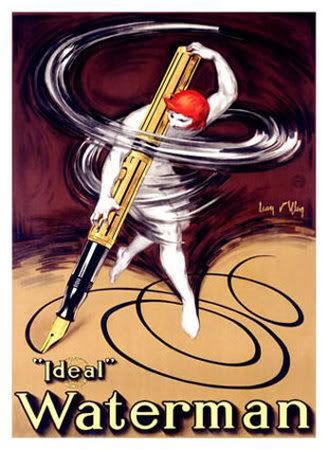
There is nothing like an amazing fountain pen to get you in the mood for some serious writing.
Fountain pens are incredibly romantic, particularly when used with a good ink well. How can you possibly keep a good journal without a decent writing instrument? How could any proper Victorian lady write with a ballpoint pen?
Everyone has their favourites. Personally, I prefer Waterman, http://www.waterman.com/en/ but there are many amazing brands out there. Just make sure that the nib is of good quality. A poor nib can destroy your pen experience and discourage you very quickly.
I ran across a great website for detailed information on how to choose a pen http://www.marcuslink.com/pens/index.html Check it out! The author has obviously devoted a lot of time to researching writing instruments.
A fine fountain pen is incredibly luxurious. It makes sublime what might otherwise seem a rather mundane activity. It forces you to slow down, to refill your pen and to truly contemplate your work. As a fine home cooked meal is to MacDonalds, so a fountain pen to ballpoint one. There really is no comparison.
Posted by
Margaret
at
11:58 AM
6
comments
![]()
![]()
Christmas Card Art
Posted by
Margaret
at
9:53 AM
0
comments
![]()
![]()
Thursday, December 6, 2007
Saint Nicholas Day
Posted by
Margaret
at
11:36 PM
0
comments
![]()
![]()
Labels: holidays
Wednesday, December 5, 2007
William Morris
In 1861, Morris founded the firm of Morris, Marshall, Faulkner & Co., later known as Morris and Company with his friends Dante Gabriel Rossetti, Burne-Jones, Ford Madox Brown and Philip Webb. The company worked at producing environmentally sensitive, nature inspired products that were intended to make the insides of homes exist in harmony with nature. Morris was particularly celebrated for the revival of tapestry weaving, producing beautiful works of art that seem straight from the pages of arthurian legend.
Morris was not only a splendid artist, but also an accomplished writer. The name of this site is taken from his most famous work, The Earthly Paradise. Morris founded Kelmscott Press in 1891. The press revived traditional handcrafted bookbinding and focussed on woodcuts and handcrafted fonts.
William Morris' work was ahead of its time. His most famous saying is "have nothing in your houses that you do not know to be useful or believe to be beautiful." His commitment to quality over quantity was a reaction to the excesses of Victorian society and remains appropriate for our own times. As the people gradually grow weary of the consumptive frenzy of our modern age, perhaps the Arts and Crafts movement will be revived.
If you would like to learn more, check out the William Morris Society Website http://www.morrissociety.org/
Posted by
Margaret
at
2:05 PM
0
comments
![]()
![]()
Labels: philosophy, william morris
Oatmeal, Porridge, Stir-about...
When I was a kid we had it practically every day for breakfast. I wasn't too fond of it because my mom always put raisins in it. But if you like them, knock yourself out!
The Perfect Porridge
1 c. rolled oats (or steel cut oats, if you have loads of time)
1 c. milk
2 c. water
salt to taste
Top it off with real maple syrup for a real treat!
Enjoy! We had it for breakfast this morning and I had it for lunch as well!
Posted by
Margaret
at
12:19 PM
0
comments
![]()
![]()
Labels: recipes
Tuesday, December 4, 2007
Beth Russell Needlepoint
Posted by
Margaret
at
4:01 PM
0
comments
![]()
![]()
Labels: needlework, philosophy, textiles, william morris
Tuesday, October 2, 2007
Ode to Autumn!
Posted by
Margaret
at
1:16 PM
0
comments
![]()
![]()
Labels: poetry
Monday, October 1, 2007
Time Management
I love the following selection. I'm going to try to stick with it over the next week and see if it works!
33. As it is good for the maids to have a settled plan of their work, so it is good for the mistress to arrange her day, by rule, as far as possible. Interruptions will occur from time to time, but a resolute woman will generally carry out her plans for the week satisfactorily.
34. It is impossible to arrange the time of any individual. The following work the mistress should do. Two hours devoted to the house and morning duties brings one to eleven o'clock; on Monday the mending must be carefully executed up lunch time. A daily walk should be taken, weather permitting, and the lady should first go and order anything required for the house, then return visits, or take a good constitutional until four o'clock. From four to five write letters, or read for an hour (serious reading, leaving light reading for evening). At five, when necessary, go downstairs to speak to cook, glance round to see all preparations are getting forward for the six o'clock dinner ; then go upstairs, inspect the housemaid's performance of needlework, always laid in your room for that purpose, and dress for dinner. Go into the dining-room, and see all is ready, put out the wine, arrange dessert and flowers. Then be ready at a quarter to six to receive le mari, and see that he has his hot water, slippers, &c. At six, dinner, after which coffee and amusements of music, reading, cards, or needlework of a light nature.
So the basic idea is:
9am-11 am or noon morning duites (for me, this means dishes and laundry or housecleaning) 12am-4pm luncheon and afternoon walk with some work thrown in (for me that means writing) 4pm-5pm write letters or read (I always have lots of letters to write, so this is important)--and I also have get ready to receive le mari at this time, since I have no cook!
5pm to 6pm make dinner After dinner, tv, needlework and other amusements!
Posted by
Margaret
at
2:11 PM
0
comments
![]()
![]()
Labels: books
Linens
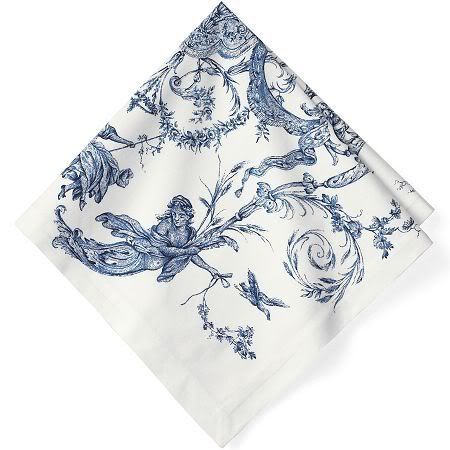
I received some of these Williams Sonoma toile napkins for my wedding shower. They are durable and lovely and come in both blue and claret. I've had a hard time finding everyday napkins to use with my Spode Blue Italian China and these are just perfect. You can order them online at: http://www.williams-sonoma.com/products/l890/index.cfm?pkey=cLINPRNI
Posted by
Margaret
at
10:33 AM
1 comments
![]()
![]()
Labels: textiles
Monday, September 24, 2007
Cute kitchen gloves!
Posted by
Margaret
at
12:06 PM
0
comments
![]()
![]()
Labels: reviews
Wednesday, July 4, 2007
Victoria Magazine
Posted by
Margaret
at
10:40 AM
1 comments
![]()
![]()
Labels: reviews
Thursday, February 22, 2007
Indochine

On a whim, my mom and I decided to visit Indochine restaurant in Tacoma, Washington yesterday http://indochinedowntown.com/. It was a lovely experience. I strongly recommend the restaurant to anyone who enjoys asian fusion cuisine.
We started off with several "Blue Mermaid" cocktails, which we'd eyed enviously at other tables. A delicious combination of coconut vodka, curacoa, alize, limoncello and lime juice, they were topped with a fresh orchid. At $8.50 a piece for doubles, I felt they were fairly priced, at least by Canadian standards!
We weren't feeling quite hungry enough for dinner, so we shared several appetizers instead. First came the curry chicken satay skewers with peanut sauce and green papya salad on the side ($8). They were incredibly moist and lightly seasoned. The sauce was smoothly textured and had the perfect amount of spice without being overly hot. Next we tried the toasted seseme chicken wrap ($12). Although I wouldn't have called the dish a "wrap" (it came served with a pastry-like flat bread on which you could place the chicken--asian fusion tostada would be more accurate), it was deliciously seasoned and presented beautifully. The chicken was seasoned with peanuts, roasted cashew nuts, mango and basil in a tangy soy-based sauce.
What attracted us to the restaurant initially were the lovely orchids that lined the windows facing the street. The interior was positively breathtaking. The cherry wood, blown glass and brushed aluminum instantly give off a chic yet exotic vibe that marries perfectly with the aesthetic of the cuisine. While I am always wary of restaurants that appear to have invested all their energy in creating an urban chic dining environment at the expense of great food, this place seems to have struck a happy balance between the two without sacrificing comptetitive flavour to their dishes or creative flair in their architecture.
For a feast for both eyes and palate, be sure to visit Indochine while you're near Tacoma Washington.
Posted by
Margaret
at
11:10 AM
1 comments
![]()
![]()
Labels: reviews
Sunday, February 18, 2007
Banana Bread
I've always felt that healthy food should be delicious. This banana bread is more flavourful than the original and far more nutritious. You can use all wheat if you would prefer, but as whole wheat absorbs a great deal of liquid when it cooks, your bread will be somewhat more dry (I would suggest adding another banana if you use all whole wheat).
Preheat oven to 350 degrees.
Sift together:
1 3/4 cup flour (for additional texture, use a combination of whole wheat and unbleached)
2 1/4 teaspoons baking powder
1/2 teaspoon salt
Add in:
1/3 cup olive oil (use extra virgin if you like the flavour)
2/3 cup pure maple syrup
dash of lemon juice
1 beaten egg
1 1/4 cups ripe banana pulp (2-3 ripe bananas)
Bake in a greased bread pan for 1 hour or till done.
By using olive oil in place of butter and maple syrup rather than sugar, you get an incredibly moist, delicious bread.
Posted by
Margaret
at
10:26 AM
0
comments
![]()
![]()
Labels: recipes
Sunday, February 11, 2007
Charles Dickens
Posted by
Margaret
at
10:18 PM
0
comments
![]()
![]()
Labels: books
Saturday, February 10, 2007
William Morris and the Arts and Crafts Home
"If I were asked to say what is at once the most important production of Art and the thing most to be longed for, I should answer, A beautiful House"--William Morris, "Some Thoughts on the Ornamented Manuscripts of the Middle Ages," 1894
Posted by
Margaret
at
2:53 PM
1 comments
![]()
![]()
Labels: decorating, william morris
Sunday, January 28, 2007
The Art of Tasha Tudor
Posted by
Margaret
at
10:34 PM
0
comments
![]()
![]()
Labels: books
Saturday, January 27, 2007
Stollen
1 cup currants
1 cup candied melon, cherries and pineapple (or similar combination)
1/2 cup amaretto
1/4 cup lukewarm water
5 teaspoons dry yeast
3/4 cup plus a pinch of granulated sugar
1 cup blanched almonds
5 1/2 cups plus 2 tablespoons all-purpose flour
1 cup plus 2 tablespoons milk
1/2 teaspoon table salt
Finely grated zest of one lemon
2 large eggs, room temperature
12 tablespoons (1 1/2 sticks) unsalted butter, cut into 1/4 inch bits and softened, plus 3 tablespoons melted
1 cup confectioners sugar
1/2 cup cream cheese
1. Combine currants, candied fruit and amaretto in a bowl. Soak at least 1 hour, stirring occcasionally.
2. Pour water into a small bowl; sprinkle with yeats and a pinch of sugar. Let stand 2 to 3 minutes; stir to dissolve yeast completely. Set aside mixture until it doubles in bulk (about 5 minutes).
Meanwhile, drain fruit, saving amaretto; return fruit to bowl; add almonds. Sprinkle with 2 tablespoons flower. Toss; coat evenly. Set aside.
3. In a heavy saucepan, combine 1 cup milk, 3/4 cup granulated sugar, and salt. Heat until warm. stirring until sugar is dissolved. Transfer liquid to bowl of an electric mixer fitted with a paddle attachment; add reserved amaretto and lemon zest. Stir to combine. Stir in yeast mixture and eggs. Gradually add 5 cups of flour; beat until well combined. Beat in softened butter until well incorporated and dough is smooth and elastic, about 5 minutes. Flour hands if dough gets sticky. Knead in one-third of the fruit mixture. Brush a large bowl with 1 teaspoon melted butter; add dough. Brush top of dough with 2 teaspoons melted butter; drape a kitchen towel over bowl and set in a warm place to rise until doubled in bulk (about 2 hours).
4. Preheat oven to 375 fahrenheit. Line a baking sheet with parchment; set aside. Punch dough down; roll into a rectangle about 16 by 24 inches and 1/4 inch thick. Sprinkle remaining fruit over pastry. starting with a long side, roll up tightly, forming a long thin cylinder. Carefully transfer dough to a baking sheet; join ends together.
5. Using sharp kitchen scissors, make cuts along outside of circle in 2" intervals, cutting two thirds of the way through the dough. Twist each segment outward, forming a wreath shape with all the segments overlapping. Brush dough with remaining 2 tablespoons melted butter.
6. Cover pastry with a clean kitchen towel; set aside to rise for 30 min. dough will rise only a little. Bake until golden brown and crusty, about 45 minutes, rotating halfway through. Cool before icing.
7. Mix powdered sugar with 2 tablespoons of milk and cream cheese. Drizzle over cooled stollen.
* The more traditional, MUCH easier way of serving stollen is spread all the fruit on the inside of the stolle and roll it like a yule log and bake it like two loves of bread. Delicious and simple! Serve it the other way for an impressive crowd pleaser.
Posted by
Margaret
at
3:55 PM
1 comments
![]()
![]()
Labels: recipes
Blue and White for Home Decor
In here and there a bird, or butterfly,
Or flower; or wearing stone or open eye,
When heaven presents in sheets the solid hue?
Since earth is earth, perhaps, not heaven (as yet)--
Though some servants make earth include the sky;
And blue so far above us comes so high,
It only gives our wish or blue a whet.
--Robert Frost, "Fragmentary Blue"
I think Robert Frost has a point when he associates humans' fondness for the colour blue with their longing for heaven. Blue certainly has to be one of the most soothing colours in the rainbow. It permeates nature and is probably only second to green in its prevelence (and if we count the ocean along with the sky, then it is actually the most dominant colour on the planet).
It makes sense, then, that blue is such a popular colour for decorating. When I was growing up, it seemed like everything in our house was blue and white. The china, the linens, flowers in the garden, chair coverings. Whenever I go into a new place, I always feel strangely at home if there is blue in the room. I remember the first time I lived away from home, the guest room in the house where I was staying was peppered with lucious shades of blue--a soft sky blue in the pinstripes on the bed and curtains the colour of irises. I instantly knew I could be happy there.
Since I was a young girl I've collected Spode Blue Italian China. I always knew that it would be the perfect china for my home when I grew up. I was fascinated by the process that produced the brilliant indigo patterns on my china. I did go through a brief period about a year ago when I began to question my taste in china, particularly when I realised that Spode was no longer being carried at many retailers. It is not sold at the Bay here in Canada, which is somewhat ironic given that it was the china that the Hudson Bay Company originally brough to Canada with them due to its durability. Despite 190 years of production, the pattern seems to still be going strong, but in a day where Vera Wang china is the "must have" registry item for young brides (and what is she supposed to know about china? She designs wedding dresses for pete's sake!), it will be interesting to see where companies like Spode and Wedgwood will be headed in the future. Nevertheless, I think the world's love affair with blue and white will continue.
Posted by
Margaret
at
1:33 PM
0
comments
![]()
![]()
Labels: decorating
Wednesday, January 10, 2007
Welcome
Posted by
Margaret
at
2:28 PM
1 comments
![]()
![]()



